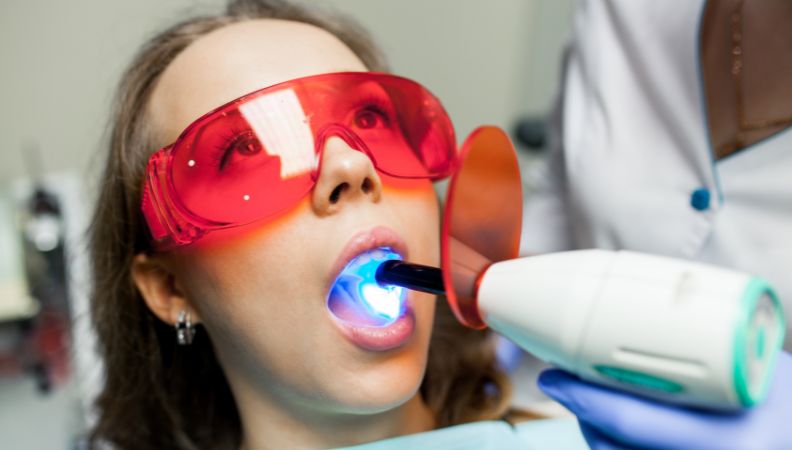Monday - Tuesday:9am - 6pm
Friday - Sunday:8am - 5pm
Sunday: Closed

Teeth whitening is one of the most popular cosmetic dental procedures, offering individuals the chance to achieve a brighter, whiter smile. Whether you’re looking to whiten your teeth for a special occasion or just want to enhance your overall appearance, teeth whitening treatments can help. From professional services to at-home methods, there are many options available. This article will explore the various teeth whitening methods, their benefits, and how to choose the best option for you. Read on for valuable tips on how to maintain a white smile long-term.
Teeth whitening refers to the process of lightening the color of your teeth by removing stains and discoloration. This can be done through a variety of methods, including bleaching agents, lasers, or home remedies. Whitening is effective for removing stains caused by food, beverages like coffee and tea, smoking, or aging. There are two primary types of whitening treatments: professional whitening and at-home solutions. Both have their pros and cons, but they all share one common goal – to give you a brighter, more youthful smile.
Teeth discoloration can happen for several reasons, including:
Understanding these factors is crucial when choosing the best teeth whitening method for you.
There are several options available when it comes to whitening your teeth. These include professional whitening, at-home whitening, and natural remedies.
Here are the most common treatments:
In-Office Whitening: This is the most effective and fastest method. The procedure is typically done at the dentist’s office using a high-concentration bleaching agent. The results are immediate and can lighten your teeth several shades in just one session.
Laser Teeth Whitening: A laser is used to activate the whitening gel, speeding up the process. It’s generally more expensive but offers long-lasting results.
Whitening Toothpaste: These are over-the-counter products that help remove surface stains. They are not as strong as professional whitening treatments but are an affordable, everyday solution.
Whitening Strips and Gels: These products contain peroxide and are applied directly to the teeth. They can be effective, but results may take a few weeks to become noticeable.
Whitening Trays: Custom-fit trays filled with a bleaching gel are worn over the teeth. These can be used at home and typically require several applications for visible results.
Baking Soda: Known for its mild abrasive properties, baking soda can help remove surface stains.
Activated Charcoal: Some people use activated charcoal as a natural method to whiten teeth. However, there is limited scientific evidence supporting its effectiveness.
Choosing the right whitening method depends on several factors, such as your budget, desired results, and how sensitive your teeth are.
Cost: Professional whitening treatments are more expensive but offer faster results. At-home treatments like toothpaste and strips are more affordable but take longer to show results.
Sensitivity: If you have sensitive teeth, it’s important to choose a whitening method that’s gentle. Some professional treatments and over-the-counter products can cause discomfort, so look for options designed for sensitive teeth.
Time: If you need quick results, professional whitening or in-office treatments may be the best option. At-home treatments require more patience.
Stain Type: The type of stains on your teeth can also affect which whitening method works best. For deep-set stains, professional treatments may be required.
Once you’ve achieved your desired tooth shade, it’s essential to take steps to maintain your new, bright smile.
Avoid Staining Foods and Drinks: Try to limit your intake of coffee, wine, and other foods that can stain your teeth. If you do consume them, brush your teeth afterward or rinse your mouth with water.
Brush Regularly: Use a whitening toothpaste to help prevent stains from building up again.
Visit Your Dentist: Regular check-ups and cleanings will help keep your teeth in good condition and maintain your whitening results.
Use Touch-Up Products: Some people use over-the-counter whitening products to maintain the results of their professional whitening treatment.
If you have sensitive teeth, you may be concerned about the potential discomfort caused by whitening treatments. Fortunately, there are whitening options specifically designed for people with sensitive teeth.
Whitening Toothpaste for Sensitive Teeth: These pastes are formulated to be less abrasive and contain ingredients that help reduce sensitivity.
Desensitizing Gels: Used alongside professional whitening treatments, these gels help to reduce the pain associated with whitening.
Custom Trays: Your dentist can provide custom whitening trays that ensure a better fit, reducing the risk of irritation and sensitivity.
Teeth whitening results can last from a few months to a year, depending on your oral hygiene habits and lifestyle choices.
Some people experience mild sensitivity during or after whitening treatments, but this usually subsides within a few hours or days.
If done correctly and with the right products, teeth whitening will not damage the enamel. Overuse of certain whitening products can lead to sensitivity, so it's important to follow instructions carefully.
The cost of professional teeth whitening can range from $300 to $1,000, depending on the method used and the dental clinic's location.
Teeth whitening only works on natural teeth, not dental restorations. Whitening may cause a mismatch in color if you have crowns or veneers.
Copyright 2025 Mediax. All Rights Reserved.